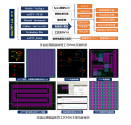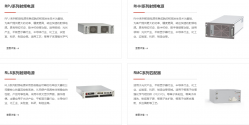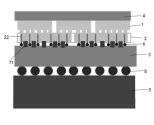Institute of Microelectronics releases open source thin film transistor TFT process design kit (PDK)
Thin film transistors are widely used in flat panel displays, memories, sensors and other fields. Among them, A-Si TFT devices have the advantages of low-temperature technology, simple preparation process, and high yield, and have become the mainstream technology for LCD active drive circuits. Currently, A-Si TFT industrial production technology continues to develop toward larger screen sizes and lower production costs. PDK based on A-Si TFT technology is a bridge connecting flat panel display foundries, EDA manufacturers and IC design companies. The PDK kit can help customers shorten the design cycle, ensure the correctness of chip functions, and improve product design competitiveness.
Facing the demand for EDA in the advanced manufacturing of integrated circuits in the post-Moore era, the Institute of Microelectronics has teamed up with scientific research institutions and related enterprises to use the openDACS chip manufacturing EDA tool -SIG5 for process simulation, device simulation, computational lithography, mask manufacturing, and yield. Conducted research on a series of EDA tools such as analysis and optimization, DTCO , device modeling and PDK , established an EDA software framework for integrated circuit manufacturing, open sourced the basic model source code and PDK toolkit, and supported the EDA tool open source community's simulation analysis and analysis of advanced device processes. Circuit design. In 2022 , the Institute of Microelectronics will open source the thin film transistor compact model OD_TFT version for the first time; in 2023 , the Institute of Microelectronics will open source the thin film transistor process PDK A-Si_TFT version.
In the A-Si TFT process PDK kit developed by Microelectronics , in addition to conventional devices such as thin film transistors and capacitors, it also includes customized units such as electrodes, pads and through holes. Other functional modules include process files, device models, physical verification rules ( DRC/LVS/XRC ) and pixel array circuit design examples. The kit also provides technical documents such as " asiTFT Design Rule ", " asiTFT PDK reference manual ", " Custom IC Design Reference Flow OA asiTFT " and " asiTFT Demo Introduction " to help designers design, simulate and verify circuit systems. The A-Si TFT process PDK kit has good compatibility with mainstream EDA software and can support analog / mixed-signal IC design. The main functional modules of the PDK are shown in the figure below.

Facing the demand for EDA in the advanced manufacturing of integrated circuits in the post-Moore era, the Institute of Microelectronics has teamed up with scientific research institutions and related enterprises to use the openDACS chip manufacturing EDA tool -SIG5 for process simulation, device simulation, computational lithography, mask manufacturing, and yield. Conducted research on a series of EDA tools such as analysis and optimization, DTCO , device modeling and PDK , established an EDA software framework for integrated circuit manufacturing, open sourced the basic model source code and PDK toolkit, and supported the EDA tool open source community's simulation analysis and analysis of advanced device processes. Circuit design. In 2022 , the Institute of Microelectronics will open source the thin film transistor compact model OD_TFT version for the first time; in 2023 , the Institute of Microelectronics will open source the thin film transistor process PDK A-Si_TFT version.
In the A-Si TFT process PDK kit developed by Microelectronics , in addition to conventional devices such as thin film transistors and capacitors, it also includes customized units such as electrodes, pads and through holes. Other functional modules include process files, device models, physical verification rules ( DRC/LVS/XRC ) and pixel array circuit design examples. The kit also provides technical documents such as " asiTFT Design Rule ", " asiTFT PDK reference manual ", " Custom IC Design Reference Flow OA asiTFT " and " asiTFT Demo Introduction " to help designers design, simulate and verify circuit systems. The A-Si TFT process PDK kit has good compatibility with mainstream EDA software and can support analog / mixed-signal IC design. The main functional modules of the PDK are shown in the figure below.





